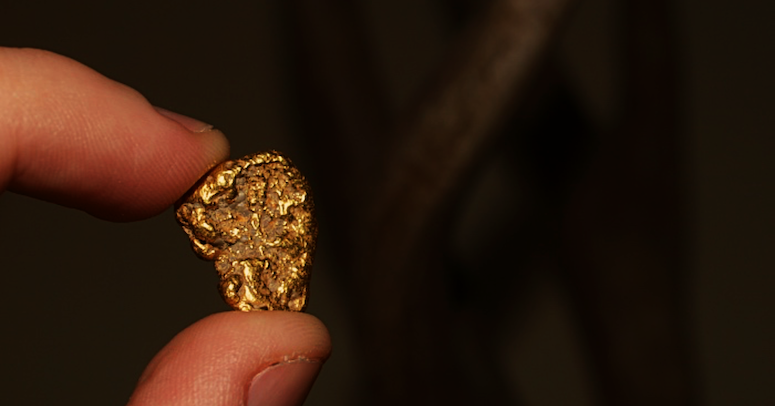
Picturesque Ireland reminds of myths, legends, and folklore; certainly not gold mining. But, it’s true, there is gold in Ireland. Although it is certainly not a major gold mining region in the world, miners have had a fair bit of luck here. There is certainly enough gold left to interest recreational prospectors.
People getting to know of gold deposits in Ireland for the first time are in for a pleasant surprise. Read on to learn about the history of gold mining in Ireland and places that are still good for recreational panning.
Gold in Early Irish Culture
The history of gold in Ireland goes way, way back in time. During the Bronze Age, the inhabitants of Ireland not only knew of gold but had extensive use of the precious metal. Experts claim they have found more gold hoards belonging to the Bronze Age (2500 BC to 500 BC) in Ireland, than any other part of Europe.
Gold was a significant part of Irish culture thousands of years ago.
Ireland has also seen some major hauls of gold, way back in the 18th and 19th centuries. The biggest gold rush during this period happened between 1795 and 1830. The period is widely known as the Avoca Gold Rush.
Over a span of 35 years, miners extracted somewhere around 10,000 ounces of gold. The largest nugget found weighed in at 682 grams (22+ troy ounces). This nugget was melted down, but a cast of it can be seen at the Natural History Museum in London.
The miners extracted gold from the alluvial deposits found at the Gold Mines River in the Wicklow County. Intensive mining means most of the gold is gone, but a persistent miner can still recover small amounts of gold flakes and dust here.

Documented Gold Mining Areas in Ireland
The Wexford and Wicklow areas are places that present an opportunity for gold panning from placer deposits or quartz rocks. The quartz rock here contain deposits of gold that wears away and gets mingled with the placer deposits in the local creeks, streams, and rivers.
In fact, people have always known Wicklow to hold gold deposits of various sizes. For a while, the whole area was teeming with activity, especially at the banks of Gold Mines River. Reports claim, from the river bed, prospectors recovered thousands of ounces of the yellow metal so far. Some were even lucky to unearth gold nuggets of varying sizes; some even weighing several ounces.
Using bare hands or employing gold pans, prospectors can extract placer gold from the bedrock cracks and behind large boulders of the Dargle River and its tributaries.
The gold rush to these documented areas with gold deposits was short and less rewarding, compared to other countries. Overall, the gold that has been found in Ireland is a mere afterthought compared to major mining regions like Alaska, California, Victoria or Kalgoorlie.
That said; the probability of finding at least some gold in these historic mining areas is actually quite good. The gold rush ended because prospecting became unprofitable. But it is impossible to truly “mine out” an area. With some hard work you can still recover small quantities of gold.
The yellow metal was once found in abundance in the Slieveanore area. Tullynore is another area that will produce gold for ambitious prospectors.
Towns such as Glenanore and Coomanore often receive visitors willing to spend a few days in search of gold. Both are at the southern end of the country. The town promises riches to seekers willing to find the source of the precious metal.
Many believe that much of the island country has favorable geology for gold. Regardless of the known history, it’s widely believed that gold, small but in abundance, is hidden in the countless rivers and creeks in Ireland. These smaller deposits are not documented, but that doesn’t mean there isn’t any gold.
Prospecting Methods
It is legal to use a variety of mining equipment, but it must me non-motorized, handheld equipment. This includes things like a standard gold pan, trowels and shovels, sifters and other digging tools. Small sluice boxes less than 4 feet in length are also permitted in most areas. Contact the National Parks & Wildlife Services in the areas that you plan to work for any details.

It is important to get proper permissions from any landowners who have claim to the area that you want to search for gold. Keep your impact to the streams minimal and do not degrade stream banks when digging.
An interesting note about the laws of Ireland is that all minerals are owned by the state. It is recognized that the small quantities and benefits of recreational prospecting are good for local economies, so there is no pressure to prevent prospecting activities by individuals. However, it is illegal to sell any gold that you find.
Commercial Gold Mining in Ireland
In this island country, there are large mining companies producing gold. One of the largest gold mines is in Omagh, Northern Ireland. The Galantas Gold Corporation is currently operating this large open-pit mine.
Just a few years ago, gold was discovered in parts of Northern Ireland. Full-scale mining operations to extract gold from these areas are yet to start. Large mines take time to establish with many years of planning and permitting.
Small gold miners and prospectors with simple tools must settle for gold in quartz rocks, rivers, and creeks. Don’t go out expecting to strike it rich. Even skilled prospectors with years of experience aren’t striking it rich in the streams of Ireland, but it’s still a fun adventure to find gold in the same areas that miners from the Bronze Age once searched.
